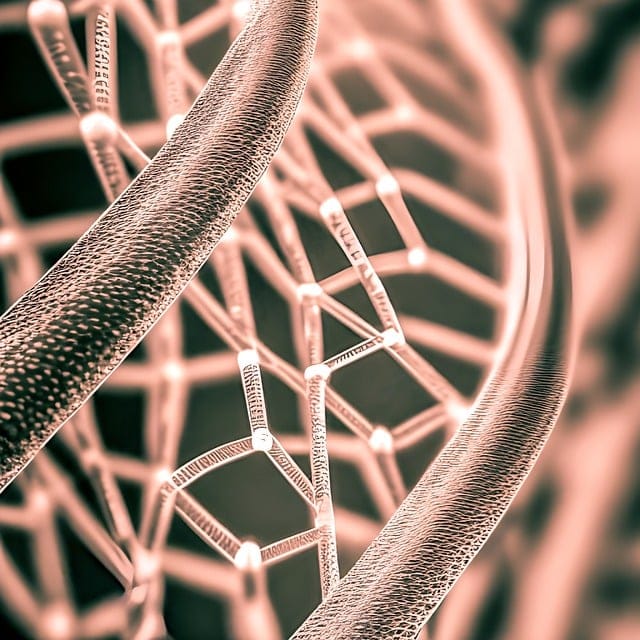Nanotechnology has emerged as one of the most transformative technologies of the 21st century. At its core, nanotechnology involves manipulating matter at the atomic and molecular levels to create new materials, devices, and systems with extraordinary properties. The term “nano” refers to the scale of one billionth of a meter, which is where these innovations occur. From healthcare to manufacturing, nanotechnology is revolutionizing industries and shaping the future in ways we never thought possible.
In this comprehensive guide, we’ll dive into the world of nanotechnology, exploring its applications, advancements, and the profound impact it has on various sectors. If you’re curious about how nanotechnology is being used today, this article will offer a clear and detailed perspective on its potential and current developments.
What is Nanotechnology?
Before delving into its uses, it’s important to have a solid understanding of what nanotechnology really is. At its simplest, nanotechnology refers to the science of manipulating materials at a nanoscale level, typically between 1 and 100 nanometers. This is the scale of atoms and molecules, where materials often exhibit unique and surprising properties that are not observed at larger scales.
Nanotechnology allows scientists and engineers to control the structure of materials at the atomic scale, which can result in dramatically different behaviors. These changes may involve alterations in strength, conductivity, reactivity, or optical properties. The unique properties of nanomaterials have opened the door to a wide array of potential applications across many industries.
The History of Nanotechnology
While this feels like a modern breakthrough, the concept actually dates back several decades. The term “nanotechnology” was first coined by Norio Taniguchi in 1974, but it wasn’t until the 1980s that nanotechnology truly began to take shape. American physicist Richard Feynman is often credited with laying the groundwork for nanotechnology through his famous 1959 lecture, “There’s Plenty of Room at the Bottom,” in which he explored the idea of manipulating individual atoms and molecules.
Since the early 2000s, the technology has moved from theoretical discussions to practical applications, and it’s now an integral part of fields such as medicine, electronics, energy, and materials science. Governments and private companies worldwide have invested billions in nanotechnology research, leading to breakthroughs that are already shaping our world today.
Nanotechnology in Medicine
One of the most exciting applications of the technology is in the field of medicine. The technology is helping to revolutionize the way we diagnose, treat, and prevent diseases. From targeted drug delivery to advanced imaging techniques, the potential benefits of nanotechnology in healthcare are immense.
Targeted Drug Delivery
One of the primary challenges in traditional drug delivery is ensuring that medications reach the specific cells or tissues that need treatment while minimizing damage to healthy cells. The technology offers a solution by enabling the creation of drug delivery systems that can target specific cells or tissues at the molecular level. Nanoparticles can be engineered to deliver drugs directly to diseased cells, such as cancer cells, while leaving healthy cells unharmed.
This targeted approach not only increases the efficacy of treatments but also reduces the side effects that are often associated with traditional therapies like chemotherapy.
Imaging and Diagnostics
This technology is also improving the way we detect and diagnose diseases. Nanoparticles can be used as contrast agents in medical imaging techniques such as MRI, CT scans, and ultrasound. These nanoparticles provide higher-resolution images and can be tailored to target specific tissues or disease markers, enabling earlier and more accurate diagnoses.
Furthermore, biosensors based on nanotechnology can detect diseases at the molecular level long before symptoms appear. This early detection could be a game-changer in managing chronic diseases and preventing them from progressing.
Regenerative Medicine
This technology is paving the way for advancements in regenerative medicine, particularly in tissue engineering and wound healing. Nanomaterials can be used to create scaffolds that mimic the extracellular matrix, promoting the growth and repair of tissues. Researchers are also exploring the use of nanoparticles to deliver growth factors and other molecules that encourage cell regeneration.
Nanotechnology in Electronics
The field of electronics has benefited tremendously from advancements in the technology. From faster processors to more efficient energy storage, nanotechnology is pushing the boundaries of what is possible in the electronics industry.
Smaller and More Powerful Devices
One of the key trends in electronics is the constant push toward miniaturization—making devices smaller and more powerful. This technology is at the heart of this revolution, allowing manufacturers to create components at the nanoscale that are faster, more efficient, and consume less power.
For example, semiconductor manufacturers are now able to produce transistors and other components that are only a few nanometers in size. This has led to the development of more powerful and energy-efficient processors that are the backbone of modern computing.
Flexible Electronics
This technology is also enabling the development of flexible electronics, which have the potential to revolutionize industries ranging from healthcare to wearable technology. Flexible electronic devices made from nanomaterials can bend, fold, and stretch without losing functionality. These materials could lead to the development of bendable smartphones, flexible displays, and wearable health monitors.
Quantum Computing
Quantum computing is another area where this is playing a significant role. Quantum computers, which operate at the quantum level, have the potential to solve complex problems that are currently impossible for traditional computers to tackle. Nanotechnology is helping to create the quantum bits, or qubits, that are the foundation of quantum computing, paving the way for a new era of computational power.
Nanotechnology in Energy
Nanotechnology holds great promise in addressing some of the world’s most pressing energy challenges. From improving energy efficiency to enabling renewable energy sources, nanotechnology is at the forefront of innovations in the energy sector.
Solar Energy
One of the most promising applications of the technology in energy is in the development of more efficient solar cells. Traditional solar cells made from silicon have limited efficiency in converting sunlight into electricity. Nanotechnology is enabling the development of new materials, such as quantum dots and perovskites, which can absorb more sunlight and convert it into energy more efficiently.
These advanced materials have the potential to make solar energy a more viable and widespread solution for meeting the world’s growing energy demands.
Energy Storage
Energy storage is another critical area where nanotechnology is making an impact. Nanomaterials are being used to create more efficient and longer-lasting batteries. For example, lithium-ion batteries with nanostructured electrodes can store more energy and charge faster than conventional batteries.
These advancements could lead to significant improvements in the performance of electric vehicles and renewable energy systems, where energy storage is a key challenge.
Fuel Cells
This is also playing a role in the development of more efficient fuel cells. By using nanomaterials as catalysts, researchers are working to improve the efficiency and durability of fuel cells, which could be a critical technology for clean energy generation.
Nanotechnology in Manufacturing and Materials Science
This is revolutionizing manufacturing processes and materials science, leading to the creation of stronger, lighter, and more durable materials. These new materials have a wide range of applications, from aerospace to construction to consumer goods.
Nanocomposites
One of the most exciting applications of nanotechnology in materials science is the development of nanocomposites. These are materials that are reinforced with nanoparticles to improve their mechanical, thermal, or electrical properties. Nanocomposites are being used to create lighter and stronger materials for use in industries such as aerospace and automotive manufacturing.
For example, carbon nanotubes are incredibly strong and lightweight, making them ideal for creating materials that need to be both durable and light. These materials are being used in everything from sports equipment to aircraft components.
Self-Healing Materials
This is also leading to the development of self-healing materials, which can repair themselves when damaged. These materials contain nanoparticles that respond to external stimuli, such as heat or light, to initiate the healing process. Self-healing materials have the potential to increase the lifespan of products and reduce the need for costly repairs.
3D Printing with Nanomaterials
3D printing is another area where nanotechnology is making an impact. Nanomaterials can be incorporated into 3D printing inks, enabling the creation of complex and highly detailed structures. This has applications in industries such as healthcare, where 3D-printed nanomaterials can be used to create custom medical implants and prosthetics.
Environmental Applications of Nanotechnology
This is not only transforming industries but also offering solutions to some of the world’s most pressing environmental challenges.
Water Purification
One of the most promising applications of the technology in environmental science is water purification. Nanomaterials such as nanofilters and nanomembranes can remove contaminants from water more effectively than traditional methods. These materials can filter out pollutants at the molecular level, providing access to clean drinking water in areas where it is scarce.
Pollution Reduction
This is also being used to reduce pollution by creating more efficient catalytic converters for vehicles and industrial processes. Nanocatalysts can break down harmful emissions more effectively, leading to cleaner air and a reduction in greenhouse gas emissions.
Environmental Sensing
Nanotechnology is enabling the development of advanced environmental sensors that can detect pollutants and toxins in the air, water, and soil at extremely low concentrations. These sensors can provide real-time data on environmental conditions, helping to prevent contamination and protect ecosystems.
Challenges and Ethical Considerations of Nanotechnology
While the potential benefits of the technology are immense, there are also challenges and ethical considerations that need to be addressed.
Health and Safety Concerns
One of the main concerns surrounding this is its potential impact on human health and the environment. Because nanomaterials are so small, they can interact with biological systems in ways that are not fully understood. There are concerns about the potential toxicity of certain nanomaterials and the long-term effects of exposure.
Regulatory bodies are working to develop guidelines and safety standards for the use of nanomaterials, but more research is needed to fully understand the risks.
Ethical Considerations
It also raises ethical questions related to privacy, security, and inequality. For example, the use of nanotechnology in surveillance systems could infringe on individuals’ privacy rights. Additionally, there is concern that the benefits of nanotechnology may not be equally distributed, leading to greater economic disparities.
It’s important for policymakers, researchers, and the public to engage in discussions about the ethical implications of nanotechnology to ensure that its development is guided by responsible practices.
Conclusion
Nanotechnology is revolutionizing industries and shaping the future in ways that were once thought to be the stuff of science fiction. From healthcare to energy to environmental sustainability, nanotechnology offers solutions to some of the world’s most pressing challenges. While there are still hurdles to overcome, including health and safety concerns, the potential benefits of nanotechnology are immense.
As we continue to explore and harness the power of nanotechnology, it’s crucial to approach its development with a focus on ethical responsibility and sustainability. The future of nanotechnology is bright, and its impact on our world will only continue to grow in the coming years.






